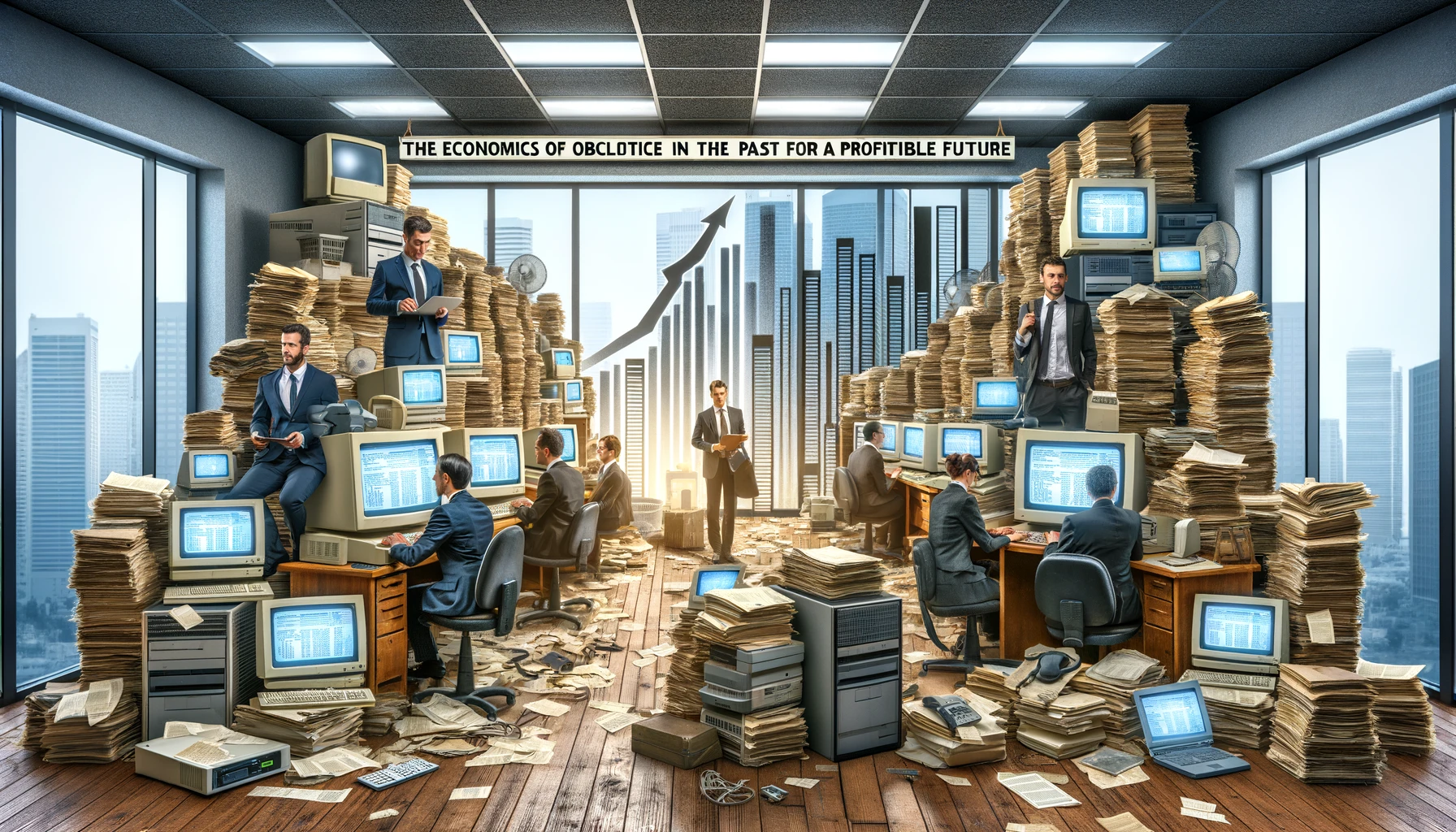This research paper explores the economic rationale and potential profitability of investing in obsolete technologies. By analyzing case studies, industry trends, and economic theories, this paper highlights how certain businesses have leveraged outdated systems to maintain competitive advantages, reduce costs, and ensure reliability. It examines the paradox of how investing in the past can sometimes be a strategic move for a profitable future.
Introduction
In the rapidly evolving world of technology, the common perception is that newer is always better. However, there are numerous instances where investing in obsolete technologies has proven to be economically advantageous. This paper aims to uncover the reasons behind such investments, exploring the financial, operational, and strategic benefits of sticking with tried-and-true technologies instead of constantly chasing the latest innovations.
Historical Context
The history of technology is filled with instances where older technologies outlasted their newer counterparts. For example, the mainframe computers of the 1960s and 1970s, despite being considered outdated by modern standards, continue to be used in critical applications today. This historical persistence is often due to the stability, reliability, and extensive support networks built around these technologies. Understanding this historical context provides insight into why businesses might choose to invest in obsolete technologies.
Economic Stability and Cost Savings
One of the primary reasons businesses continue to invest in obsolete technologies is economic stability. Older technologies are often fully depreciated, meaning the initial capital investment has been fully recovered. This allows businesses to operate with lower overhead costs compared to adopting new technologies, which often come with high initial investments and ongoing upgrade costs. Furthermore, maintaining and operating older systems can be more predictable and stable, reducing financial risks associated with new, untested technologies.
Reliability and Proven Performance
Obsolete technologies have a track record of reliability and proven performance. Industries that require high levels of reliability, such as banking, healthcare, and aerospace, often prefer older technologies that have demonstrated their robustness over time. The cost of failure in these industries is extremely high, making the reliability of older technologies a critical factor in their continued use. This reliability translates into economic benefits by minimizing downtime and maintenance costs.
Niche Markets and Specialized Applications
Certain obsolete technologies serve niche markets and specialized applications where modern alternatives may not be viable. For example, the use of FORTRAN in scientific computing and COBOL in banking are instances where the specific needs of the industry are best met by older technologies. Investing in these technologies allows businesses to capitalize on their specialized applications, maintaining a competitive edge in their respective markets.
Skills Retention and Workforce Stability
Investing in obsolete technologies can also help retain a skilled workforce familiar with these systems. Many businesses face challenges in retraining their workforce for new technologies. By continuing to use older systems, companies can leverage the existing expertise of their employees, reducing the costs and disruptions associated with retraining. This stability in the workforce can lead to higher productivity and lower turnover rates.
Case Studies
To illustrate these points, we examine several case studies:
- Mainframe Computers in Banking: Many financial institutions continue to rely on mainframe computers due to their unparalleled reliability and security. Despite the availability of modern alternatives, the economic benefits of sticking with mainframes, including lower operational costs and higher stability, make them a preferred choice.
- Legacy Software in Healthcare: Healthcare providers often use legacy software systems that are deeply integrated into their operations. The cost and risk of migrating to new systems can be prohibitive, making the continued investment in these older technologies a financially sound decision.
Strategic Benefits
Beyond immediate economic gains, investing in obsolete technologies can provide strategic benefits. It allows businesses to avoid the pitfalls of early adoption, such as bugs and compatibility issues. Furthermore, it can provide a buffer period to observe and learn from the experiences of early adopters of new technologies before making a transition.
Conclusion
Investing in obsolete technologies can be a paradoxically profitable strategy. By leveraging the stability, reliability, and lower costs associated with older systems, businesses can achieve economic stability and maintain competitive advantages. Understanding the economic rationale behind these investments highlights the importance of strategic decision-making in technology management.

